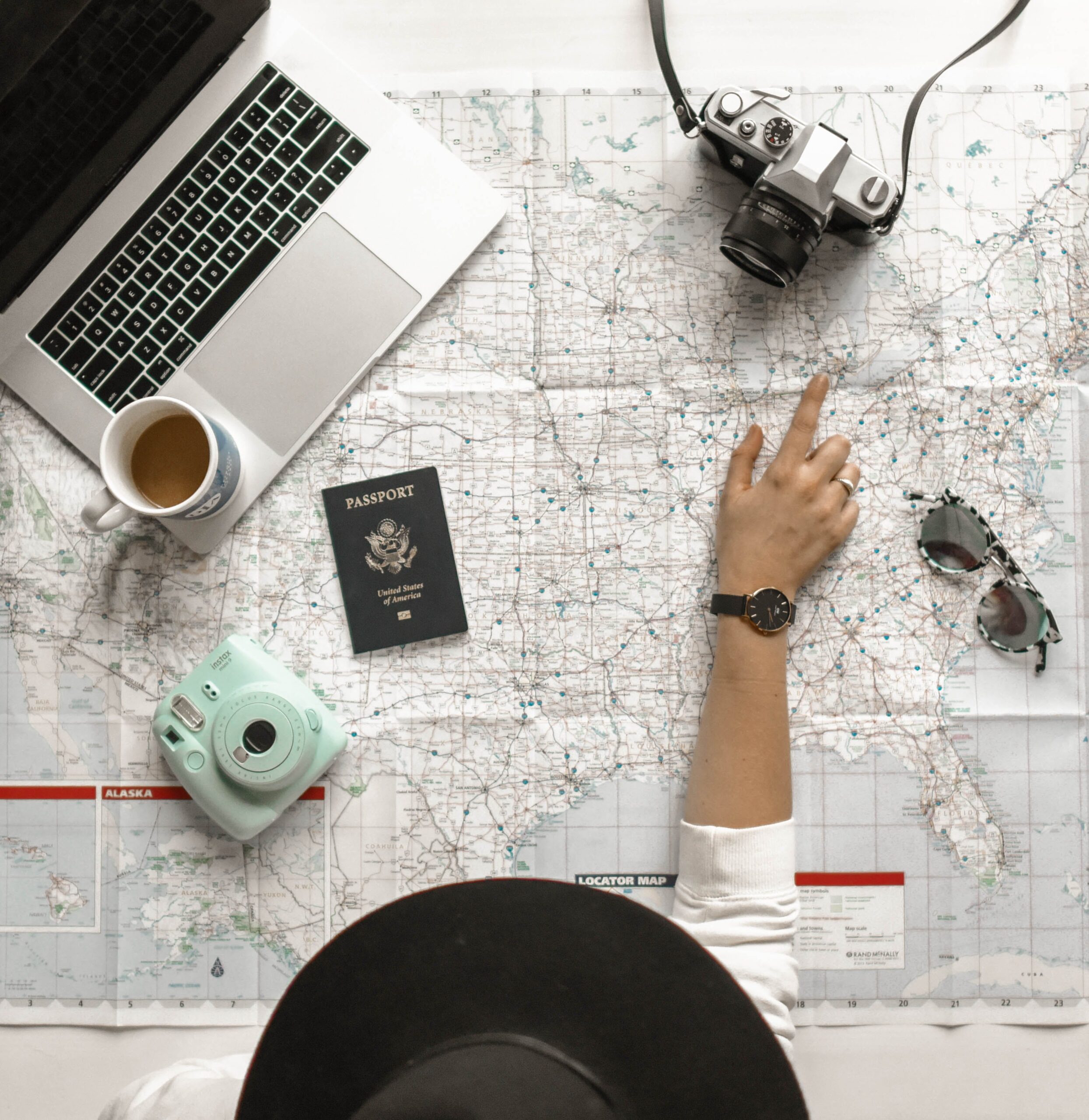
Your iPhone’s location can reveal much about you. Accessing geo-restricted content or preserving privacy, altering your digital whereabouts affords control and liberty.
A premium VPN such as ForestVPN provides the swiftest method to alter your iPhone’s location; however, alternative strategies exist. Our guide will assist you in exploring your choices, encompassing VPN utilization, App Store region configuration, and iPhone GPS setting adjustments.
Discover the most straightforward methods to alter your digital location, ensuring you remain connected regardless of your actual whereabouts or the location indicated on your iPhone.
Exploring the Dynamics of Location Services on Your iPhone
Your iPhone leverages GPS, cellular networks, and Wi-Fi to accurately determine your location, integrating this capability with various apps to tailor and improve your user experience.
Your iPhone’s geolocation capabilities enhance user experience with features such as reminders and photo tagging, while seamlessly updating time zones and weather predictions. Despite the convenience, privacy considerations emerge as apps may utilize this information for tracking purposes. Fortunately, you can control your iPhone’s location access and usage.
Discover the Top 4 Outstanding Advantages of Altering Your iPhone’s Geographic Location
Individuals frequently modify their iPhone’s location for diverse motives, such as protecting privacy from inquisitive apps and websites or accessing content unavailable within their geographical limits. Here are the five primary benefits of adjusting your iPhone’s location settings:
- Enhance Privacy: Modifying your iPhone’s location settings can bolster your privacy by concealing your real-time whereabouts from applications and websites.
- Access Exclusive Content: Altering your location grants you entry to previously inaccessible, region-restricted material on platforms like YouTube or Spotify.
- Access Restricted Services: Altering your iPhone’s location enables you to circumvent geographically imposed restrictions on apps and services, granting you comprehensive access.
- Save Money While Shopping: One frequently disregarded benefit of online shopping is the opportunity for cost reduction. Certain e-commerce platforms adjust prices based on your geographic location, hence, by altering your digital locale, you can discover superior deals and economize.
Option 1. Modify your iPhone’s geographical location by utilizing a VPN
Using a VPN is an efficient method to alter your iPhone’s location. It routes your internet connection through global servers, thereby modifying your location and IP address, which enhances privacy, enables access to geo-restricted content, and fortifies online security.
Here’s the step-by-step guide on how you can effortlessly accomplish it using ForestVPN:
1. Download ForestVPN from the App Store
Begin the process by downloading ForestVPN from the App Store.
2. Establish a personalized account and securely log in.
After installing the app, open it and register a new account, then log in using the credentials you just created.
3. Provide the required authorizations and permissions.
When prompted, tap Allow to grant the app permission to configure VPN settings on your device, which is essential for its proper function.
4. Select a country of your choice.
Within the app, you’ll find a list of available countries to connect with. Choose your desired location from our global selection of servers.
5. Initiate a secure Virtual Private Network connection.
Select your desired country and tap Connect to establish a VPN connection, routing your internet traffic through the server of the chosen country.
6. Ensure the proper functioning of your VPN connection.
Ensure your VPN’s proper function by first ascertaining your current IP address through an IP address finder or a quick Google search for “What’s my IP?” After connecting to a VPN server, verify your IP address again. A different IP address signifies an active, operational VPN.
When the use of a Virtual Private Network (VPN) may not suffice in altering your geographical location.
A VPN assigns you an alternative IP address, concealing your actual one and enhancing your online anonymity. Nonetheless, altering your IP address may not affect your iPhone’s perceived location. Apps that utilize GPS data or reference your Apple Store regional settings can still determine your whereabouts despite the IP change.
Despite using a VPN, these apps can deduce your actual whereabouts, particularly those requiring precise location information, such as navigation, social media, or shopping applications. Should you encounter this issue, several alternatives are available.
Option 2: Transition to a Different Region on Your Apple Store
Occasionally, you may wish to download an app unavailable in your locale. Modifying your Apple Store region can circumvent these limitations.
When traveling, relocating, or exploring international apps, follow these steps to change your Apple Store region:
iPhone
- Open the Settings app on your iPhone.
- Tap your name at the top to access your Apple ID.
- Navigate to Media & Purchases and select View Account. You may be required to input your Apple ID password.
- Navigate to Country/Region and select Change Country or Region.
- Select a new country or region from the list.
- Please review and accept the Terms and Conditions.
- Update your payment method and billing address as needed.
- Click Done to confirm the changes.
iPad
- Begin by launching the Settings app.
- Click on your name at the top of the sidebar.
- Select iTunes & App Store.
- Tap your Apple ID, then select View Apple ID.
- Under Account Settings, choose Country/Region.
- Select a new country or region.
- Please review and accept the Terms and Conditions.
- Update billing information if necessary.
- Click Done to confirm your region change.
Altering your region can impact existing apps and subscriptions, as certain content may be inaccessible in the new locale. Additionally, ensure your billing information corresponds with the new region to prevent any complications.
Option 3: Modify your GPS coordinates to a new location
Several motives may prompt you to alter your iPhone’s GPS location, such as accessing geographically restricted content or experimenting with apps in diverse locales. Fortunately, the process is relatively simple.
- Select a Trustworthy Third-Party Application: Numerous third-party applications, such as iTools, Dr.Fone, and iMyFone, can assist with altering your GPS location. Opt for one that aligns with your requirements. Before installation, review the privacy policies to understand the potential usage and sharing of your data.
- Connect your iPhone to your computer: Securely link your iPhone to your computer using a USB cable, unlock your device, and select Trust This Computer when prompted.
- Launch the Application: Initiate the previously installed third-party software.
- Activate the Virtual Location Feature: Access this option directly from the app’s menu.
- Enter the Desired Location: Input the address or coordinates for your destination, or drop a pin directly on the integrated map.
- Confirm and Teleport: Once you have chosen your preferred destination, confirm the selection to update your settings. Your iPhone’s GPS will then display your current position at the newly selected location.
Use only reputable applications to modify your GPS location, as it may impact app performance and is typically temporary. Verify compliance with app guidelines and relevant local regulations.
Option 4: Deactivate your Location Services feature
Your iPhone’s Location Services employ cellular, GPS, Bluetooth, and Wi-Fi to pinpoint your device’s position, aiding apps like maps and weather that require geographical data to operate optimally. Nevertheless, should privacy concerns or battery conservation be a priority, you have the option to disable Location Services. Here’s the procedure:
- Press the Settings app on your iPhone.
- Scroll down and select Privacy & Security.
- Select Location Services from the top of the list.
- Disable Location Services; a confirmation prompt will be displayed.
- Click Turn Off to confirm and disable location services for all apps.
Guide on Deactivating Location Services for Specific Applications
If you want to keep Location Services active but limit it to certain apps, you can easily customize the settings. This allows you to choose which apps have access to your location information.
- Access your iPhone’s settings by tapping the Settings icon.
- Navigate to Privacy & Security.
- Select Location Services from the top of the menu.
- Browse the apps utilizing Location Services.
- Select the desired app to modify its settings. You will encounter choices such as Never, Ask Next Time, While Using the App, or Always.
- Select settings for each application that align with your privacy preferences.
Is it possible to mask my geographical location while using an iPhone?
Absolutely, it is indeed possible to conceal your location on an iPhone. This is frequently accomplished by employing services such as Virtual Private Networks (VPNs) or location-misrepresentation applications. These ingenious tools grant you the power to alter your perceived location to a different one, proving advantageous for an array of reasons - from accessing content that is restricted to specific locations, to ensuring your privacy remains unviolated. Nevertheless, it is crucial to deploy these tools judiciously and stay cognizant of the terms and conditions specified by any applications or services you utilise while your location is masked.
Will modifying the region linked to my Apple ID have any impact on my device or services?
Yes, modifying your Apple ID region can significantly impact numerous facets of your iPhone utilization:
- Access to the App Store: Upon changing your region, you will be granted access exclusively to the App Store designed specifically for that region. Consequently, certain apps or content that were previously accessible in your original region may not be available in the newly selected region.
- Purchases and Subscriptions: Be aware that prior purchases or subscriptions may not be successfully transferred to your new region. Included in these non-transferable items are apps, books, films, and music.
- Updating Payment Methods: It is crucial to note that you'll be expected to modify your method of payment to one that is recognized and valid in your newly selected region.
- Restrictions on Content: Each region comes with its distinct set of laws and regulations on digital content which can significantly impact the nature and availability of content accessible to you.
- Impact on Apple Media Services: Your access to services such as Apple Music and Apple TV+ might be impacted due to region-specific variations in their content libraries.
Bear in mind, although altering your Apple ID region is permissible, it must be carried out in strict accordance with Apple's Terms of Service.
Will I risk losing my applications if I alter my geographical region settings?
Modifying your Apple ID's regional settings can potentially impact your access to apps in multiple ways:
- Access to App Store: With a change in regions, you'll be directed to the new region's App Store. The availability of certain apps may differ from your previous region to the new one, meaning you might not have access to some apps you previously did.
- Re-downloading Apps: In the event an app isn't available in the App Store of your new region, you may encounter difficulties re-downloading it if it's deleted or when changing to a new device.
- Updates: If certain apps are not accessible in your new region, they might not receive any updates.
Yet, in general, apps that are already installed on your device should remain intact unless they are intentionally removed or call for updates that are unavailable in the new region. Therefore, it is crucial to weigh these potential impacts before altering your Apple ID's region.
12345Proxy index


